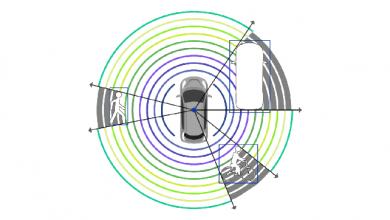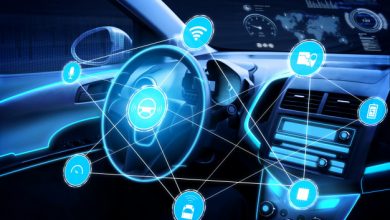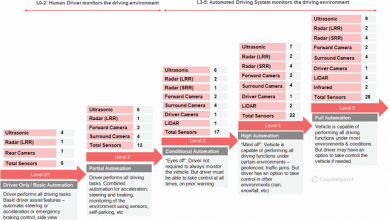Imaging Radars: All Weather Reliable Sensors for Assisted & Autonomous Tech
What is an Imaging Radar?
 The self-driving car industry is developing rapidly & there is an immense focus on the autonomous tech from many established as well from the new entrants. The search is on for a reliable sensor which can work in adverse weather conditions (fog, rain & dust) and gives adequate navigational information on terrain and moving objects. Radar is the most reliable sensor in inclement weather as the Radar frequency spectrum is least affected by these weather conditions. Radar has been used in Aviation & Military for many years, where limited numbers of objects were tracked. Present day Radars as used in Automotive do not provide enough resolution to define the shape/size of the object. That’s where the imaging radar helps bridge the gap. 4D imaging radar (which gives location, velocity, size & shape) with machine learning enables terrain mapping & object classification.
The self-driving car industry is developing rapidly & there is an immense focus on the autonomous tech from many established as well from the new entrants. The search is on for a reliable sensor which can work in adverse weather conditions (fog, rain & dust) and gives adequate navigational information on terrain and moving objects. Radar is the most reliable sensor in inclement weather as the Radar frequency spectrum is least affected by these weather conditions. Radar has been used in Aviation & Military for many years, where limited numbers of objects were tracked. Present day Radars as used in Automotive do not provide enough resolution to define the shape/size of the object. That’s where the imaging radar helps bridge the gap. 4D imaging radar (which gives location, velocity, size & shape) with machine learning enables terrain mapping & object classification.
Classical Radar & Imaging Radar Comparison
If your goal is to detect a car in front of you (or driving towards you) and get its velocity, the present RADAR can be sufficient. However, if you are trying to determine the precise location of an item, generate a terrain map, like dividers or shoulder fencing, an Imaging Radar will do much better.
Sensors for Autonomous Driving
There are various sensors used in Automobiles for Advanced Driver Assistance Systems (ADAS) and Autonomous Driving. Table 1 is a comparison of various sensor used in Automotive. From the table, it can be inferred that Radar & Camera complements each other and the combination is capable of replacing every other sensor technology.
Table 1: Ranking of various Automotive Sensors (higher is better)
| Parameter | Ultrasonic | Lidar | Radar | Camera | Imaging Radar |
| Range | * | *** | **** | **** | **** |
| Resolution | * | **** | * | ***** | *** |
| Velocity | ** | *** | **** | * | **** |
| Snow/Fog | **** | ** | **** | * | **** |
| Cost | ***** | * | *** | **** | *** |
| Color/ sign | NA | NA | NA | ***** | NA |
There will be multiple fusion (Radar plus Camera) sensors used in a car. Front looking Imaging radar helps in navigation through all weather conditions.
Automotive sensor placement (Courtesy: ADI)
Corner & Side radar helps in lane change & blind spot detection. These can be non-imaging (Object tracking) radars to lower the cost of the sensor. Steradian IC is cost optimized for both imaging & object tracking radar applications: this flexibility allows the same chip to cater all applications.

Primary use of Radar Sensor.
- Front Radar is the most critical and getting mandatory by ENCAP in Europe. This serves the important function of Collision Detection, Warning, Mitigation and Avoidance.
- Corner & Side Radars take care of the driver by monitoring the threats moving along-side. They are used for Blind spot monitoring / blind spot detection,
Lane change assistance and lane departure warning system. This can be used for early deployment of airbags in an imminent collision. - Rear Radar: These are looking backwards for possible rear ending and Cross Traffic Alert to help you detect approaching vehicles while backing up.
Differentiation
Steradian focus is in building a world class Imaging Radar System. If one were to develop imaging radar solution with existing Radar ICs, the build cost will run into several hundreds of dollars, whereas with Steradian IC, the cost can be kept 3-4x times lower to enable wider segment adaption. We at Steradian have developed World’s most compact 28nm Millimeter-wave Imaging Radar chip to maximize the pixels per square-mm. The IC developed at Steradian is optimized for Performance, Power & Cost for Imaging Radar. Our flexible solution enables a very large number of antenna sensors which brings 4D imaging through Radar to a reality.
Figure 2: Steradian 4D radar
On the imaging system side Steradian has developed & demonstrated the algorithm. Steradian technology is widely appreciated by the Industry: Steradian was selected as the winner for the 2017 Qualcomm Design Contest, MG Motors Innovation Drive 2017, IESA Most Innovative Product 2018.

Business Outlook
Worldwide, the Automotive Radar market is poised at 20% CAGR*, with >6B$ TAM* projections, the radar market presents an opportunity for the innovation driven startup like Steradian. All major OEMs are including ADAS features in the cars and plan to launch AVs in next 2-3 years. Imaging Radar systems as being developed by Steradian fills in the need for an all-weather, fail safe, terrain mapping system fundamental to enabling Safe, Assisted and Self driving technology. This solution has the potential to bring in a mass market radar revolution by delivering the technology at the correct price point. Beyond developed countries where the ADAS/Autonomous tech is being swiftly adopted, we see this technology being well placed for developing nations such as India where poor road conditions, fog & insufficient lighting causes millions of accidents every year. The dire need, the tech and the price point make the imaging Radar to see early adoption as a safety device in the after-market as well. The tech is not limited to road traffic and can find applications in rail collision avoidance and Drones for surveillance. Gesture recognition is an interesting consumer application of the Radar technology.
Steradian plans to bring their products to market by partnering with world class OEM’s by leveraging their volume manufacturing and segment knowledge.
Automotive safety – Indian Context
India has a high road accident rate – the reasons are very many and most of which are detectable & preventable using a high-resolution Radar Tech.
Imagine driving a car in dense fog on a highway with a visibility of 2-3 Meters. Typically, the driver can neither clearly identify the vehicle in front, nor can he judge the location of the divider gaps for a U turn. In winter, expressways are frequent witness to serious pile-up involving multiple vehicles due to low visibility.
Another common place situation is of driving on an undivided road at night & blinded by oncoming traffic high-beams.
Steradian 4D Radar technology comes as a life saver due to its ability to map the road space in bad lighting and inclement weather – the two primary reasons for accidents.
About the Author
Rakesh Kumar, Founding Director, Steradian Semiconductors
Rakesh Kumar has experience in developing complete solution including Firmware & Systems/. Rakesh led the WLAN RF for 2 generations in TI. He has co-authored 2 IEEE papers and holds 8 issued US patents.



